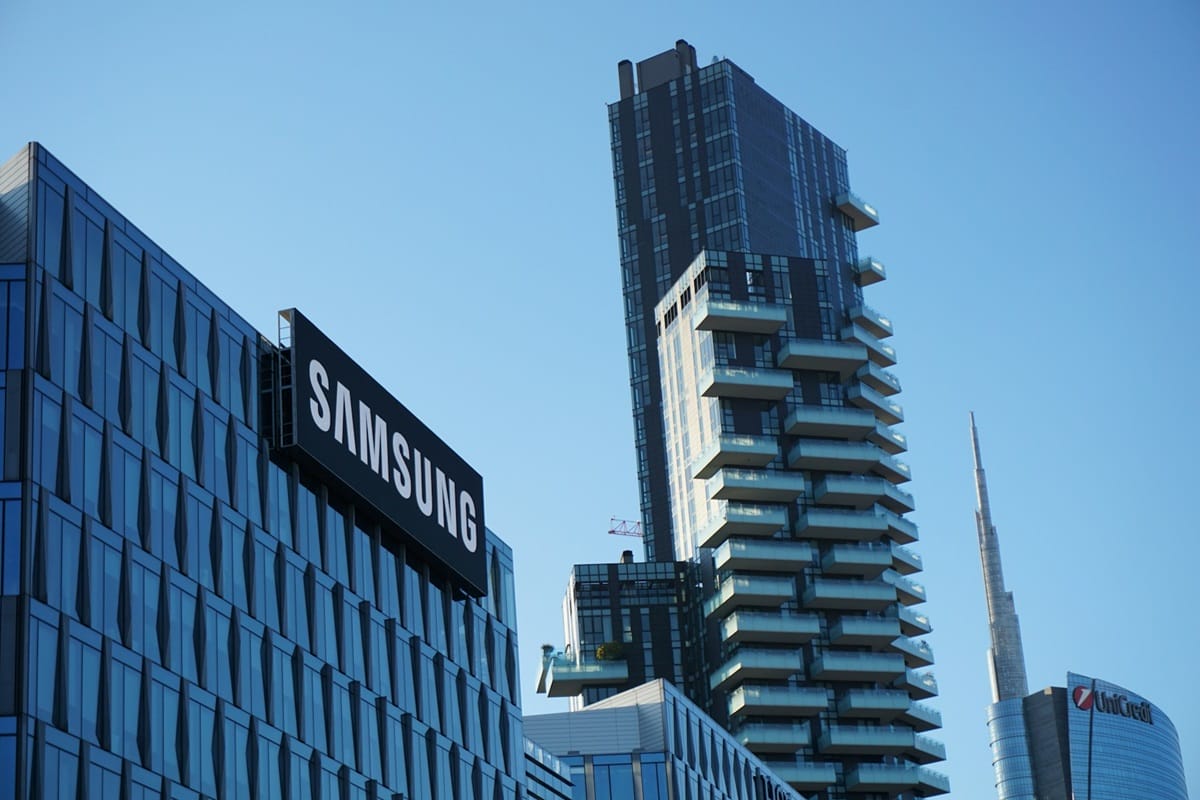Samsung Electronics on Tuesday, April 30, released information on its financial results for the first quarter of the current year, which showed significant growth, largely due to an increase in prices for memory chips amid increased optimism about the prospects for the development and scaling of the artificial intelligence industry.

The revenue of the mentioned company in January-March 2024 amounted to 71.92 trillion Korean won (about $52.3 billion). This indicator showed an increase of 12.81% compared to the result for the same period last year.
Samsung’s operating profit from January to March 2024 was fixed at 6.61 trillion Korean won. This indicator increased by 932.8% year-on-year. It is worth noting that the mentioned operating profit of the company is the highest since the third quarter of 2022.
It is also worth paying attention that the financial results of the company’s activities for the first quarter of 2024 exceeded the preliminary expectations of experts. LSEG analysts predicted that Samsung’s revenue for the mentioned period would be fixed at 71.04 trillion Korean won. As for the operating profit, they expected this figure to be 5.94 trillion Korean won.
At the same time, the result for the last quarter is in line with Samsung’s preliminary forecasts. In early April, the company officially announced the expectation that its operating profit for the first three months of 2024 will grow to 6.6 trillion Korean won. The firm also predicted that its revenue for January-March of the current year would reach 71 trillion Korean won.
After the data on the company’s financial results for the first three months of 2024 were released, the price of its shares increased by 1.8%.
For the tech giant, the results for the last quarter are an unambiguous signal of what can be described as a kind of economic recovery. Last year, the company had to face huge losses. The failures of 2023 are because the advanced electronics and chip industry plunged into the condition of a downturn amid falling demand after the end of the coronavirus pandemic.
Samsung’s statement released on Tuesday indicates that the company’s consolidated revenue of 71.92 trillion Korean won for the first quarter of 2024 is due to significant sales of flagship Galaxy S24 smartphones and rising prices for memory semiconductors. Commenting on the operating profit of 6.61 trillion Korean won, the firm underlined that its memory chip business has returned to profitability as a result of meeting demand for high-value-added products.
Citi analysts say there are significant prospects for further development and improvement of Samsung’s financial performance in making NAND flash memory. Experts justify this point of view by the growing demand for computing using artificial intelligence. In a note released in early April, Citi analysts reiterated their Buy rating on the Samsung with a target price of 120,000 Korean won. This indicator is 56% higher than the closing price last Monday, April 29.
It should be clarified that NAND is another main memory chip along with DRAM. In the first quarter of 2024, the cost of microcircuits NAND increased by 23-28%. At the same time, DRAM chips have raised in price by about 20% over the mentioned period. The relevant information was made public by the TrendForce data provider.
Citi analysts said they expect storage (HDD) to become the next bottleneck in computing using artificial intelligence. In their opinion, this tendency will largely affect the training of AI models. They also expect Samsung to become one of the main beneficiaries of the growing consumer demand for solid-state drives (SSD) needed to implement the mentioned process. The company is currently one of the world’s largest manufacturers of DRAM chips. These microcircuits are used in consumer devices, including computers and smartphones.
Samsung expects that in the second quarter of 2024, demand for artificial intelligence will be mainly driven by consumer interest in generative AI. The company also predicts that mobile device sales will be stable during the mentioned period. Moreover, Samsung expects that the demand for personal computers will be affected by the seasonality factor. This formulation implies a high level of probability that customers will adjust the inventory before launching new products in the second half of 2024.
Also in the profit and loss statement published on Tuesday, Samsung mentioned the increasing uncertainty in the space of geopolitical relations. Besides, in this report, the company drew attention to the continued increase in the cost of major components, including memory.
Samsung expects that in the second quarter of 2024, its profitability will show a moderate decrease compared to the already recorded figure of the first quarter and the projected result of the third quarter. The company’s optimistic attitude toward the prospects of activity in the second half of the current year is due to the upcoming debut of new flagship products for which the firm has high hopes. The company also pays special attention to cost competitiveness at all stages of research and development, production, and sales. The corresponding efforts are aimed at achieving a result in the form of stable profitability. Moreover, the company announced its intention to boost sales of flagship devices by expanding the Galaxy AI line.
The operating profit of Samsung’s semiconductor business in January-March 2024 amounted to 1.91 trillion Korean won. It is worth noting that during the same period last year, this business faced a loss of 4.58 trillion Korean won. In the fourth quarter of 2023, the result was also negative. At that time, a loss of 2.18 trillion Korean won was recorded.
SK Kim of Daiwa Capital Markets, in a comment to the media, suggested that the unexpected profit of Samsung’s semiconductor business in the first quarter of 2024 was due to a significant increase in memory prices against the background of the positive consumer dynamic in the artificial intelligence industry. The expert also stated the expectation that the company will focus on the favorable prospects of the memory market and demonstrate its readiness to implement AI technologies, including HBM (12H HBM3E, HBM4), and foundry/packaging solutions.
Jaejune Kim, Samsung’s vice president in charge of the memory arm, announced plans to increase the supply of HBM-related chips in 2024 by more than three times compared to the figure recorded in 2023.
It is worth noting that artificial intelligence models are currently on a kind of trajectory of complication. Against this background, the volume of data sets is increasing. New artificial intelligence models require memory chips with higher capacity and higher operating speeds to meet growing workloads.
In a report published in early April, SK Kim announced the expectation of another price increase for memory microcircuits. According to the expert, the corresponding tendency will be a factor affecting Samsung’s profits in the second quarter of 2024 against the background of the so-called artificial intelligence boom and the earthquake in Taiwan. It is worth noting that the mentioned cataclysm has made temporary adjustments to the activities of chip manufacturers such as TSMC and Micron.
Samsung launched the HBM3E 8H and V9 NAND mass production process in April. The company said the decision was made as part of efforts to meet the demand for artificial intelligence. Samsung also plans to launch the manufacturing of HBM3E 12H products and 128-gigabyte products based on 1b-nanometer 32-gigabyte DDR5 SDRAM shortly.
The company expects the operating environment to remain favorable for demand in the second half of 2024. Samsung assumes that artificial intelligence will contribute to the materialization of this forecast. The company reckons that the uncertainty in the macroeconomic space and the high level of tension in the plane of geopolitics will not factor in the deterioration of the operating environment.
Samsung also made a statement that the development of 3-nanometer and 2-nanometer technological processes is moving smoothly forward. The company launched mass production of 3-nanometer chips in 2022. Samsung plans to start making 2-nanometer microcircuits in 2025.
As mentioned above, an important factor influencing the company’s revenue and operating profit figures for the first quarter of 2024 was sales of smartphones of the latest Galaxy S24 series. Samsung stated that such artificial intelligence features as Circle to Search, Photo Assist, and Live Translate, which are equipped with the mentioned devices, were popular among buyers. The company warned that in the second quarter of 2024, there may be a decline in demand for smartphones and their supplies due to the impact of the seasonality factor. At the same time, Samsung expects that in the next half of the year, the market for corresponding devices may be on a recovery trajectory against the background of stabilization of consumer sentiment, expansion of artificial intelligence-based products and services, and economic growth in emerging markets.
The operating profit of the company’s mobile devices unit for January-March 2024 amounted to 3.51 trillion Korean won. Over the same period last year, the corresponding figure reached 3.94 trillion won.
In the first quarter of 2024, Samsung shipped about 60 million smartphones to the global market. This indicator corresponds to the result for the same period last year, but still, the company regained its position as a leader in the global market of these devices, despite the deterioration of sales figures in China. Information from International Data Corp. indicates that in the first quarter of 2024, the company was able to regain its position as the main supplier of cell phones in the world. It is worth noting that at the end of last year, Samsung lost the corresponding leadership to Apple.
The company announced its intention to continue the process of introducing Galaxy AI into existing and new flagship devices. This activity is aimed at stimulating further growth.
It is worth noting that currently, many countries around the world are striving to develop semiconductor production. In April, the administration of United States President Joe Biden announced the provision of up to $6.4 billion in funding to Samsung to create new manufacturing facilities for making chips in Texas. Micron and TSMC also intend to develop production activities in the United States.
Moreover is currently demonstrating the ambitions of Rapidus, which has received additional subsidies from the Japanese government of $3.89 billion. This funding is intended for the mass production of 2-nanometer chips from 2027.
There are also concerns that Samsung may cede its market position to SK Hynix, the world’s No. 2 memory microcircuits maker, which announced in March the launch of manufacturing of HBM3E, the next generation chips with high bandwidth. The mentioned products are used in sets of microcircuits of artificial intelligence. SK Hynix is the main supplier of HBM3 chips for Nvidia.
Mehdi Hosseini, senior tech hardware analyst for Susquehanna International Group, said that in the past Samsung was the market leader in memory, displays, and smartphones, and now it is only benefiting from the recovery cycle.









